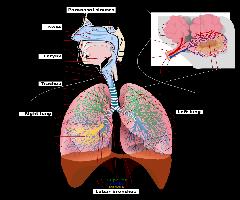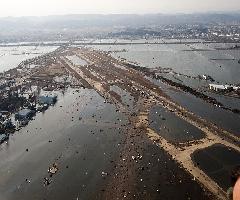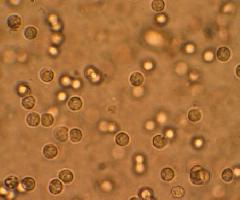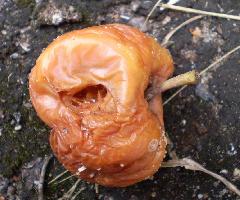When you hang wet clothes after washing them, why do they become dry? Where does the water go? Water turns into water vapor (gas), we say, it "evaporates". The process is called evaporation . Evaporation takes place in oceans, lakes, river, plants and even people. The amount of water vapor in the air at a given time is called humidity . Sometimes, the air holds much less water vapor than it can possibly hold at the temperature. In this case, humidity is low. When humidity is low, water (including the water in our sweat) evaporates fast, and we feel cool.
Sometimes the air holds almost all the water vapor it can hold at that temperature. In this case, humidity is high. And evaporation is slow. When humidity is high, we often feel uncomfortable and sticky.Comparing the actual amount of water vapor in the air to the greatest amount it can hold at a given temperature gives us the relative humidity of the air. When the air holds only half of what it can possibly hold at that temperature, its relative humidity is 50%. When it holds all the water vapor it can possibly hold at that temperature, its relative humidity is 100%, the air is said to be 'saturated '. When the temperature of saturated air goes down, clouds form . Meteorologist s use a number of instruments for determining relative humidity. These include the sling psychrometer, hair hygrometer and hygrograph. High up in the atmosphere, humidity is measured by instruments in a weather balloon.
Air pressure
The earth is surrounded by blanket of air. Air has weight. The weight of the air pressing down on the Earth per unit area is called air pressure . You may not notice it, but the air around you does not always weigh the same. When the air is heavy, it presses down hard and creates high pressure . Regions where air pressure is high experience fair weather. When air is light, there is low pressure . Regions were air pressure is low experience cloudy, rainy or stormy weather. Air pressure varies from place to place. This is due to the changing temperature of air. When the air is warm, it becomes light and it rises, leaving behind an area of low pressure. When the air is cool, it becomes heavy so it sinks and forms an area of high pressure.
In a low pressure area, the warm air that rises soon cools down. As air gets cooler, water vapor in the air changes into liquid water. This explains why there is often rain in low pressure areas. In an area of high pressure, the air that sinks starts to warm up. Warm air can hold a large amount of water vapor so rain does not fall. This explains why air of high pressures has clear, dry weather. Air pressure decreases as the elevation of land increases. Air pressure on mountain top becomes less because there is less
air in a high place. If you travel by plane, you may fell a change in air pressure when your ears pop. This shows that the air pressure inside your ear is higher than the air pressure in the plane so it pushes your air drums out, thus the popping sound.Air pressure is measured with a barometer . A rising barometer indicates fair weather while a falling barometer indicates bad weather. Air pressure at higher altitude is measured by instruments carried by weather balloon.
Wind speed and direction
Air does not stay in one place all the time. It rises when it is warm and sinks when it is cold. It moves from an area of high pressure to an area of low pressure. Moving air is called wind . Is the wind blowing now? How fast it is blowing? It may be slow, moderate or fast. The speed of wind depends on the difference between air pressures in two areas. If the difference is light, the wind speed is slow to moderate. If the difference is big, the wind speed becomes fast and can be violent enough to blow down trees or houses along its path. The speed of wind is measured with an instrument called anemometer . This is a device which has three or four cone shaped cups at the end of rods about five to twenty cm long. The rods are attached to a spindle. When the wind blows, the cups rotate. The faster the wind blows, the faster the cups rotate.
Wind brings about the changes in the weather . The nature of these changes depends on the direction from which the wind is blowing. Winds are name are named after the direction from which they blow. For example, a wind blowing from the south toward the north is called a south wind . A wind blowing from the west to east is a west wind . The direction of wind can be determined by the weather vane, also called wind vane . This instrument turns freely on an upright rod. The arrow has a small arrow head and wide tail. When the wind blows, it pushes the head and the arrow head turns to the direction from which the wind blows. Below the arrow are rods, the ends of which have the initials of the principal directions. Winds high above the Earth's surface are measured by sending up large balloons. The balloons move with the same speed and direction as the wind. The motion of the balloon is measured by radar.
note: originally posted at Exposeknowledge.com under the same author.
If you find this article interesting, you might also want to read these:
http://expertscolumn.com/content/simple-ways-stop-global-warming
http://expertscolumn.com/content/conservation-natural-resources
http://expertscolumn.com/content/recognizing-causes-climate




